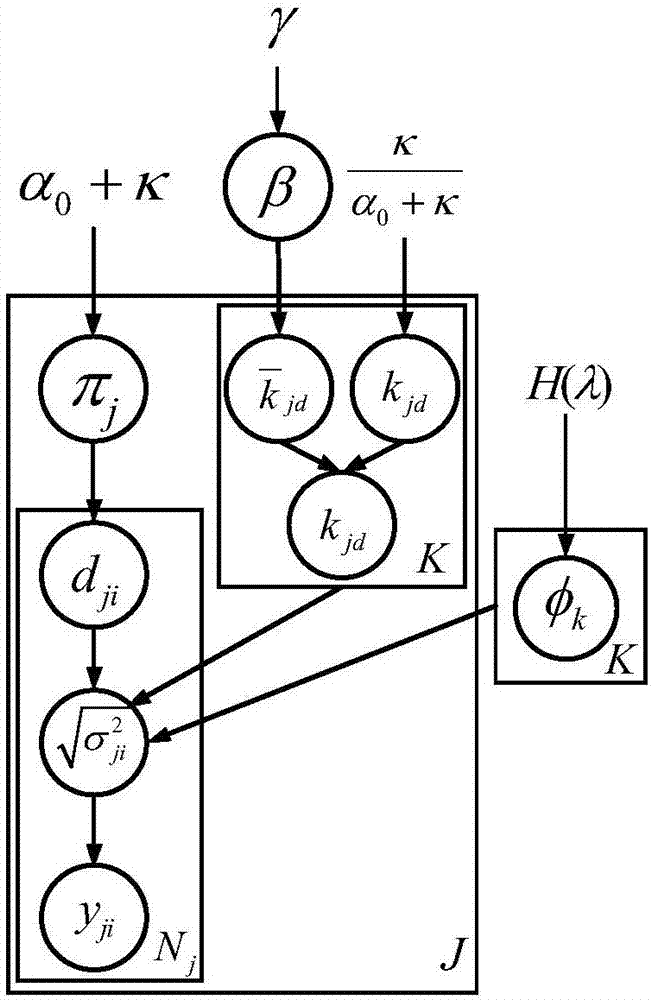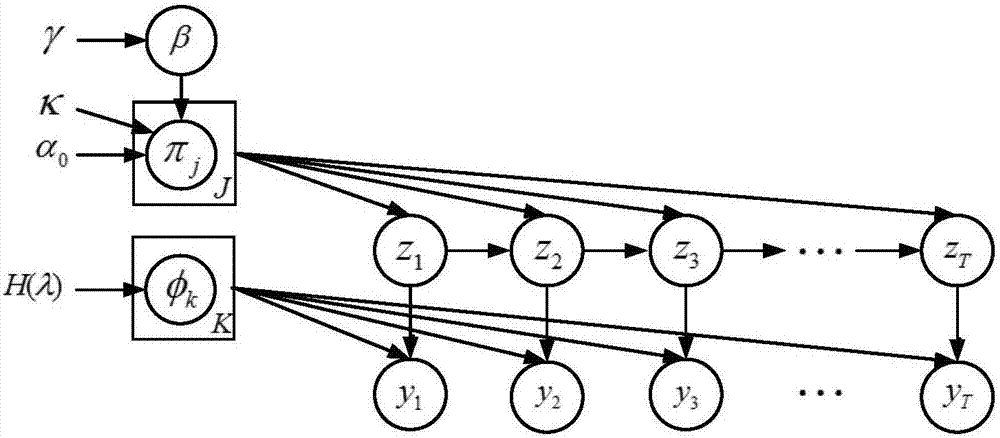Cooperative spectrum sensing method based on multi-user historical sensing data mining
A technology of collaborative spectrum sensing and sensing data, which is applied in the field of collaborative spectrum sensing based on multi-user historical sensing data mining, can solve equipment-level and network-level uncertainties, insufficient utilization of historical spectrum occupancy state transfer characteristics, inaccuracy, etc. problems, to ensure effectiveness and improve spectrum decision performance
- Summary
- Abstract
- Description
- Claims
- Application Information
AI Technical Summary
Problems solved by technology
Method used
Image
Examples
Embodiment
[0041] The present invention is a collaborative spectrum sensing method based on multi-user historical sensing data mining, such as figure 1 As shown, the specific steps are as follows:
[0042] Step 1. Rejection process
[0043] Step (11), establish the received signal data set y at each moment t '={y 1t ,y 2t ,...,y Pt}, where y pt is the perceived signal data of user p at time t, y t ' is the perception data set of all users at time t, P is the number of user receivers
[0044] Step (12), set the rejection threshold θ(θ∈[0,1]), for a received signal y pt , if its likelihood probability p(y pt|H k ) are less than θ, then the signal will be placed in the rejection domain middle. The rejection threshold θ can be set according to the specific needs of different systems.
[0045] Step (13), compare each sensing signal with the rejection domain, discard it if it belongs to the rejection domain, otherwise keep the sensing data, and finally create a new received signal...
PUM
 Login to View More
Login to View More Abstract
Description
Claims
Application Information
 Login to View More
Login to View More - R&D
- Intellectual Property
- Life Sciences
- Materials
- Tech Scout
- Unparalleled Data Quality
- Higher Quality Content
- 60% Fewer Hallucinations
Browse by: Latest US Patents, China's latest patents, Technical Efficacy Thesaurus, Application Domain, Technology Topic, Popular Technical Reports.
© 2025 PatSnap. All rights reserved.Legal|Privacy policy|Modern Slavery Act Transparency Statement|Sitemap|About US| Contact US: help@patsnap.com



